[미리보는 올해 우주탐사 일정]
ESA searches for extraterrestrial life with Jupiter’s ‘ice moon’
NASA explores ‘Treasure Star’ and selects astronauts to go to the moon
Korea is also busy with the Danuri Mission and the launch of the Nuri.
“The desire to explore is human nature.”
Carl Sagan ‘Cosmos’
Since ancient times, humans have never stopped exploring. From the surrounding nature to the New World, Antarctica, and the deep sea. Now humanity is lifting its head and hoisting its sails into space. Bill Nelson, director of the National Aeronautics and Space Administration (NASA), called 2022 “a golden age of space exploration that will be recorded in the history books.” The ‘Artemis Program’ to build a space exploration outpost on the moon took its first step, and the James Webb Telescope landed at the Lagrange Point (the point where the sun and Earth’s gravity balance) to record the clearer picture of the universe than ever before. there is.
The exploration of space is just the beginning. The clock of space exploration does not stop even in 2023. From the exploration of Jupiter’s icy moon to find extraterrestrial life, to the exploration of a treasure island full of rare minerals, more spectacular events unfold than in the movies. If you feel sorry for space exploration that you can only access through YouTube or news, it would be a good idea to visit the ‘intuition’ (direct viewing) attraction for the 3rd launch of Nuri, which is scheduled for the first half of this year. You can feel Korea’s science and technology competing with space powers.
An image of the juice mission. Provided by ESA
In April, ESA’s Jupiter Moon Orbiter was launched.
The most interesting space exploration this year is the Jupiter Icy Moons Explorer (JUICE) mission conducted by the European Space Agency (ESA). The first large-scale project of ESA’s space program ‘Cosmic Vision’, the Juice mission aims to discover water on the gas giant Jupiter and Jupiter’s large moons (Ganymede, Callisto and Europa).
The existence of extraterrestrial life has been the greatest curiosity since mankind started space exploration. Water is the clearest condition for organisms to exist. Scientists believe that Jupiter and its moons contain more water than Earth, in the form of ice.
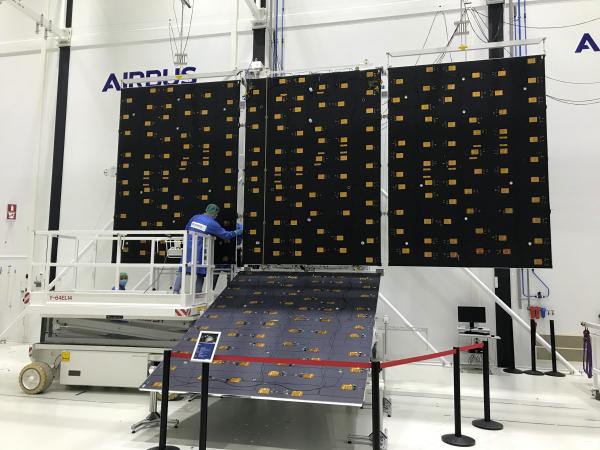
ESA engineers are assembling the Juice probe’s solar panels. Provided by ESA
The Juice probe, which is equipped with 10 state-of-the-art scientific instruments, will observe the surface of Jupiter’s satellites through at least 35 low-flying flights and collect scientific evidence for the possibility of extraterrestrial life. The probe is scheduled to be launched with a space rocket Ariane-5 from the ESA launch site in French Guiana in April this year.
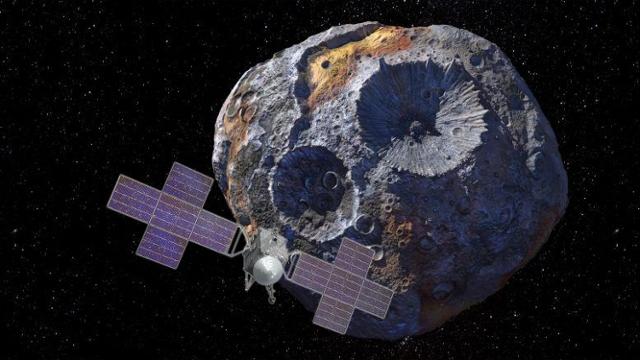
An artist’s rendering of NASA’s asteroid probe Psyche. screw provided
In October, NASA’s asteroid Psyche probe was launched.
NASA explores the asteroid Psyche. Psyche is an asteroid located between Mars and Jupiter. It is one of the asteroid belts that make up the disk model along with many other asteroids between Mars and Jupiter.
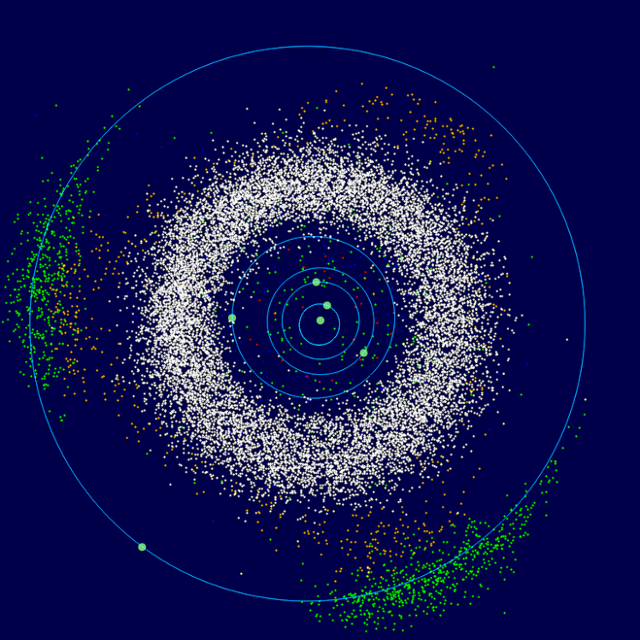
A map showing the location of the asteroid. The green dot in the center is the Sun, and the outermost dot is Jupiter. White dots are asteroids in the asteroid belt, and red dots are near-Earth asteroids.
Psyche, first observed in 1852, is a heavy planet composed only of metals such as iron, nickel, and gold. It is a relatively large asteroid with a diameter of 252 km. It is nicknamed ‘Treasure Star’ because it is composed of rare metals with an economic value of 1,000 quintillion dollars (approximately 123 quintillion quintillion won).
However, the main goal of this mission is scientific exploration, not resource extraction. Scientists believe that Psyche It is believed to be part of a core fragment of a protoplanet formed in the early solar system. Most planets have metallic cores deep within them. Earth case It is estimated to consist of about 85% liquid iron and about 10% nickel. However, there is no way to reach the nucleus with modern science and technology, so research has not made progress for a long time.
Psyche observations are expected to provide important clues to indirectly studying the composition of planets such as the Earth’s core. The Psyche probe is scheduled to launch in October this year. It plans to fly close to Mars in 2026 and arrive at the asteroid Psyche in August 2029. This is the first time humans have observed a celestial body made of metal up close.

A view of the Bennu asteroid. screw provided
In September, the Benu asteroid sample arrives at Earth
There is also a mission to return to Earth. It is NASA’s ‘OSIRIS-REx’ mission that collects samples of the asteroid Bennu and returns to Earth.
Bennu is an asteroid with a high probability of colliding with Earth. In 2135, Benu is within 200,000 km, which is only half the distance between the Earth and the Moon. However, there is a possibility of a collision if the orbit is changed under the influence of Earth’s gravity. Bennu is about the size of the Empire State Building. When it collides with the Earth, it can cause damage in a radius of 500 km, such as creating a crater of more than 5 km and generating a tsunami.
NASA’s exploration of Bennu was also a decision in consideration of this point. Through this exploration, NASA concluded that the probability of Bennu colliding with Earth between 2100 and 2135 is 1 in 1,750.
After completing its main mission, Osiris-Rex is returning to Earth with samples of Bennu’s soil and rock. The probe, which left Earth in 2016, is scheduled to drop a capsule containing a Benu sample on September 24 this year.
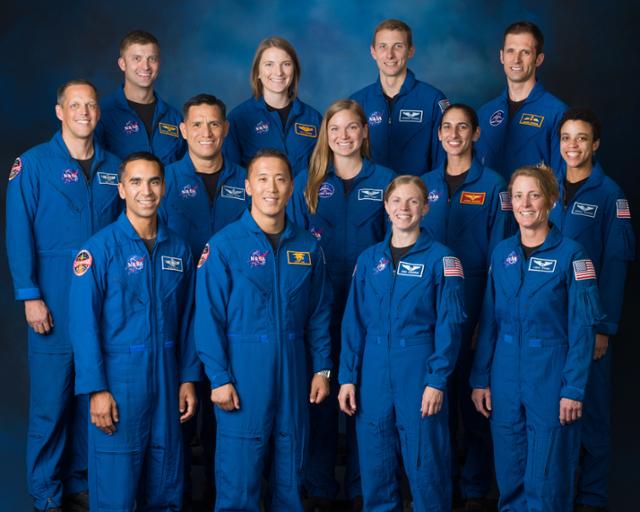
NASA astronauts selected for the Artemis program. screw provided
Breathing Artemis, astronaut selection at the beginning of the year
The US-led super-large lunar exploration project ‘Artemis Program’ is also in progress. The launch of Artemis 2 has been delayed until next year, but astronauts are scheduled to be selected at the beginning of the year.
The Artemis project, named after the goddess of the moon in Greek mythology, aims to put humans on the moon by 2025. To this end, NASA selected 18 prospective astronauts (Artemis Team) in 2020 and continued training and evaluation. Among them, one female and one male astronaut will be selected for a manned flight in lunar orbit aboard Artemis 2. Along with this, a prototype of the Artemis space suit will also be unveiled.
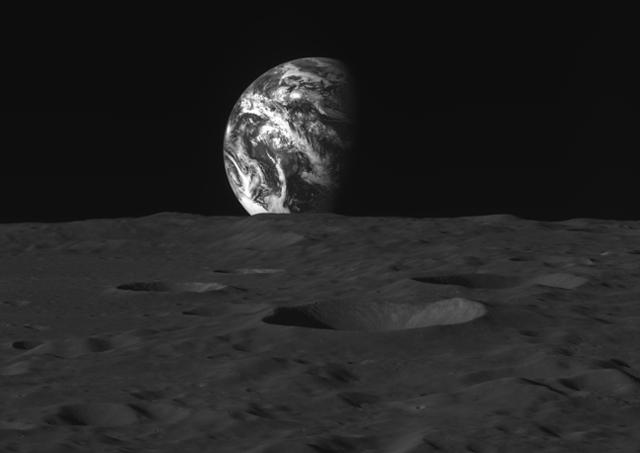
Earth photographed by Danuri from 124 km above the Moon. Provided by Korea Aerospace Research Institute
The Korean space schedule, such as the Danuri mission, is also packed.
Korea’s space exploration schedule, which has started a space race in earnest, is also richer than ever. Korea’s first lunar probe, Danuri (KPLO), started its initial operation on the first day of the new year. By the end of the year, it plans to explore lunar resources and lander candidates by making a circular orbit through the south and north poles of the moon. The Korea Aerospace Research Institute explained, “In January, we will check the initial operation of the payload and conduct a functional test of the main body, and then we will start exploration in earnest from February.”
The third launch of the Nuriho (KSLV-II) is scheduled for the first half of the year. The third launch is to increase the reliability of the Nuri, which was successfully launched in June last year. Next-generation small satellite No. 2 is installed as the main satellite. The transfer of launch vehicle technology to private companies is also taking place so that space development can be led by the private sector. Starting with this launch, Hanwha Aerospace will repeatedly launch the Nuri on a total of four occasions until 2027, and will receive the Anti-Coin-Yeon’s comprehensive system technology and launch operation experience.
In addition, the project to develop the ‘next-generation launch vehicle’ (KSLV-Ⅲ), which has superior performance than the Nuri, is also in full swing. The Space Aviation Administration is also set to be established this year.
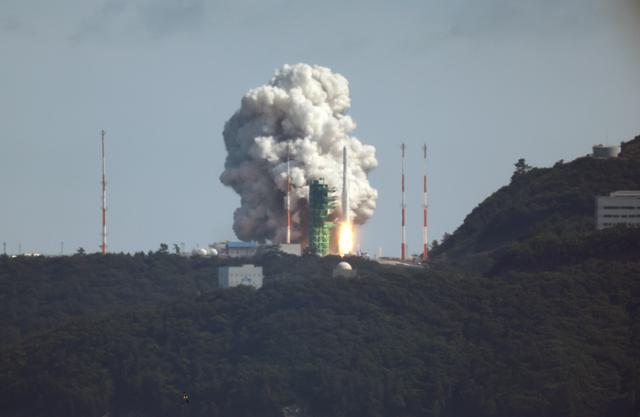
The Nuri is being launched from the Naro Space Center in Goheung-gun, Jeollanam-do on the afternoon of June 21. yunhap news
choi dongsoon reporter [email protected]


